SQUIRREL_13098438
With a wealth of hybrid e-readers coming onto the market, it’s difficult to know which are genuinely good at multitasking, and which are just e-readers, with a little extra functionality.
The Note Air2 Plus is essentially an e-book reader; that’s what you’re most likely to use it for straight away. But dive below the surface and you’ll find that those added features are actually the making of this tablet.
For starters, it’s compatible with the Google Play Store. This means not only do you have access to the Kindle store but a wealth of other apps, too. And a fair number of them have been optimised for e-ink readers, which immediately opens this tablet up to being more than just an e-reader.
For doodling and notetaking, the pre-installed software, called Notes, is really all you need. At first glance, you’d be forgiven for thinking it’s your standard e-ink notepad – but there’s much more to this app than meets the eye. More on that below.
The setup process is easy and straightforward
Thankfully the days of long, laboured set-ups are gone. The set-up process for the Note Air2 Plus takes around two minutes, so you don’t need to be a tech whizz to use this tablet. Just have your Wi-Fi password to hand and you’re good to go.
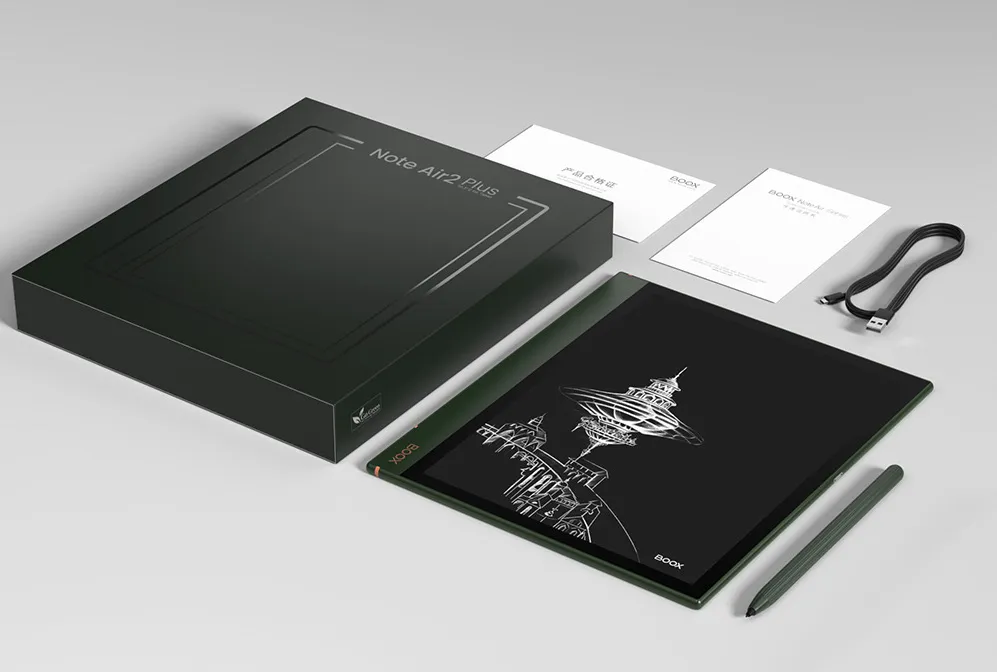
The home screen has six modules along the left-hand side: Library, Store, Note, Storage, Apps and Settings; a main content area, and the usual system bar (time, Wi-Fi signal, battery percentage etc) along the top. Of these, you’ll likely use Library and Notes the most.
Thankfully, it seems to be an emerging trend to include a stylus with the latest range of e-ink devices, which, after the eye-watering price of £139 for an Apple Pencil, is very welcome. With 4,096 levels of pressure sensitivity, you’re not skimping on quality, either.
As a side note: I strongly recommend downloading the user manual (by going to Settings > User manual, where it will download into your library) so that you can browse all the functions at your own pace.
Nifty features optimise the user experience
The Note Air2 Plus runs on a customised version of Android 11, and efficiency is the name of the game. Switching between tasks and programs is a doddle thanks to the floating navigation ball; you can move it around the screen, or even hide it completely. Tap it, and the menu expands. And yes, that too is customisable. Adjust the volume via an ‘invisible’ tab on the left (just swipe up or down near the edge of the screen), likewise, an invisible tab on the right controls the brightness of the screen.
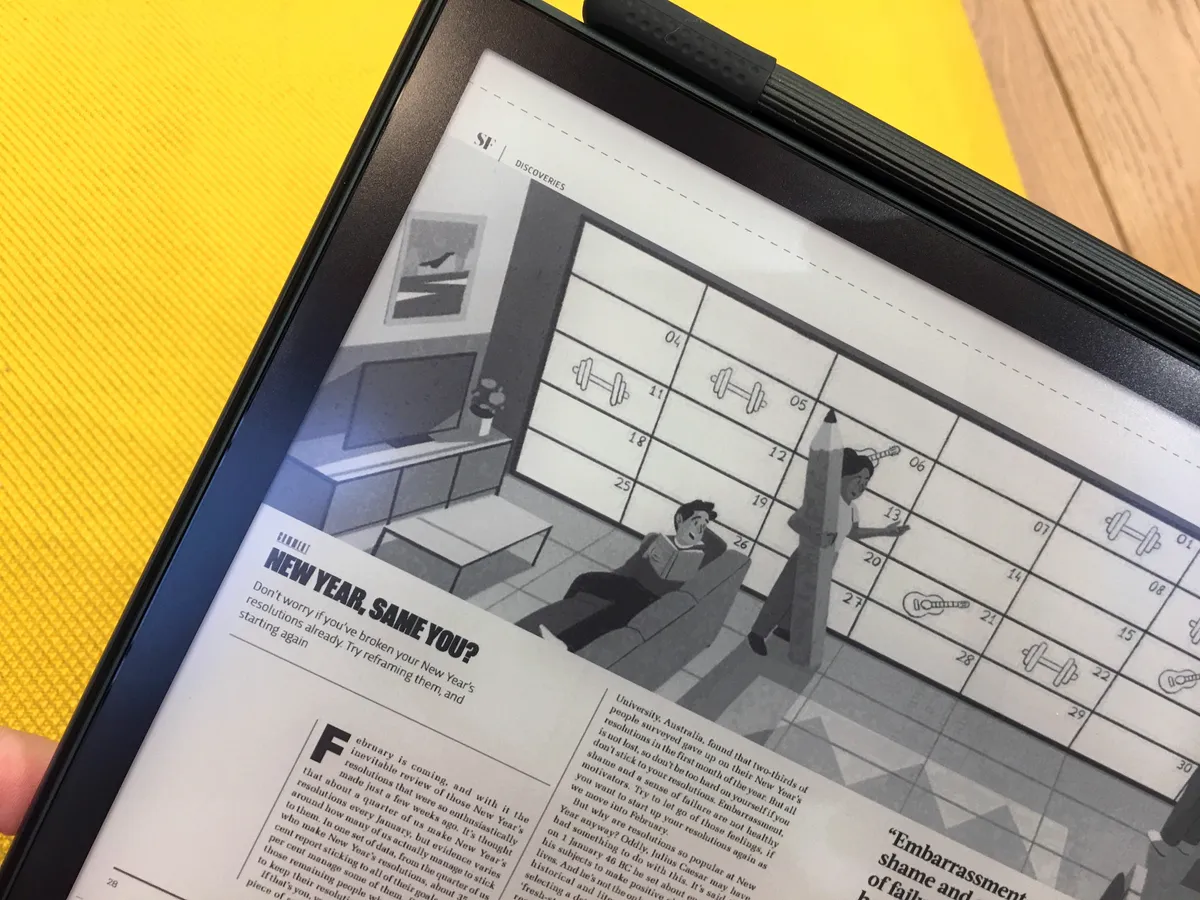
Like almost everything in this tablet, the library is customisable. You can organise your books onto bookshelves, check up on reading stats, even create a sub-library if you wish – useful if you guzzle books like oxygen (looking at you, BookTok). Long press a word to look up a definition, and you can password/fingerprint protect your reading data, if you wish.
E-ink screens are ‘laggy’ by nature – they have a different mechanism for display and refresh when compared to LED and LCD – so there’s no getting around this. However, the Note Air2 Plus has a rather useful feature that optimises the screen lag, depending on what you’re using it for. The floating navigation ball makes it easy to refresh the screen and clear the ghost images as and when you need to, but you can also tweak the automatic refresh rate.
So, if you’re watching the occasional video and the ghosting is just too much, switch to X Mode, whereas Normal Mode is better for ordinary text reading. Although it can support video, you probably won’t want to make a habit of it, or any other e-ink tablet for that matter; better to stick to reading and writing.
If you’re a Windows 10 user there’s a rather nifty feature called ScreenCast, which allows you to project your computer screen to the tablet. Sadly, it’s not (currently) compatible with MacOS – fingers crossed for an update down the line.
But for all its versatility, it doesn’t have an option for expandable storage. If you’re a data-heavy user, you’ll need to actively manage your book collection or rely on Cloud storage.
A large, clear, and customisable display
Aside from just how feature-rich this e-reader is, the glass screen is a stand-out asset to this tablet. The 10.3-inch, HD Carta glass screen has a matte finish, but feels smooth, and oh-so-beautiful to write on (no, seriously).
It’s actually made from several screen layers pressed together, and the 1404 x 1872 resolution, with 226 ppi (pixels per inch) means that the display is crisp. But if it’s not to your liking, you can adjust it with the redesigned E-Ink Center. You can customise the blacks, tweak the greyscale, or dilute lighter colours.
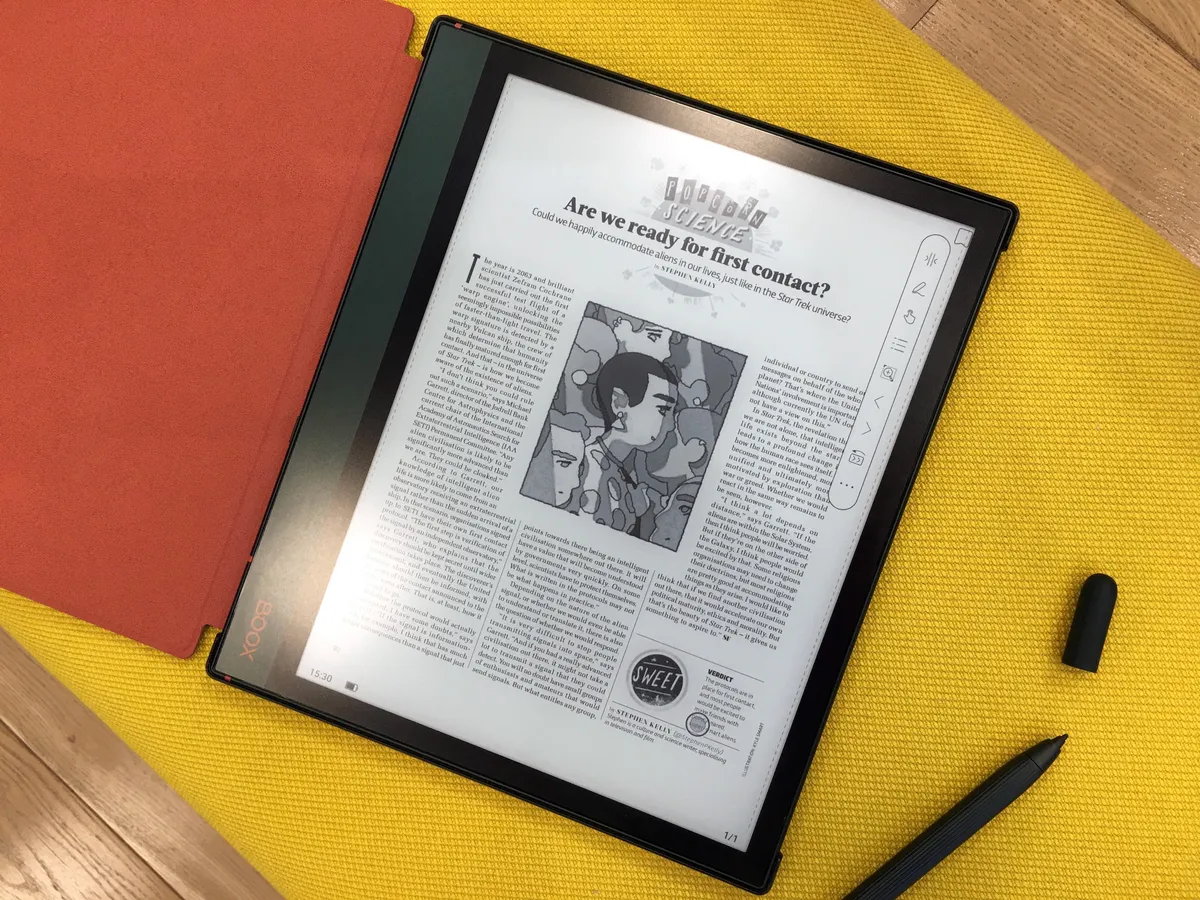
The front-lit display has 32 LED lights, slightly less than the 35 on the Amazon Kindle Scribe, but it’s clear and easy on the eyes. You can manually control the warm and cool tones, or turn down the display completely, and you’ve got a piece of paper.
But it’s not the technical details that really impress, it’s the way the glass feels. The writing and drawing experience feels soft; like writing on the puffy side of a notebook with your favourite pen or pencil. It even sounds like you’re scribbling with a pencil onto real paper, and completely eclipses the writing experience on the iPad, which by comparison feels slippery and ‘plasticky’.
Annotating documents is useful for research
As well as reading, you can also annotate – but you don’t need to add digital sticky labels to do so. Set to handwriting by default, you can use the scribble toolbar to add notes to documents. Writing directly onto the PDFs, your handwritten notes will automatically embed into the original file, which you can then export – ideal if you’re working on a thesis, dissertation, researching your own book, or if like me, you often have your nose buried in a journal or research paper. Musicians adding notes to scores will also find this handy.
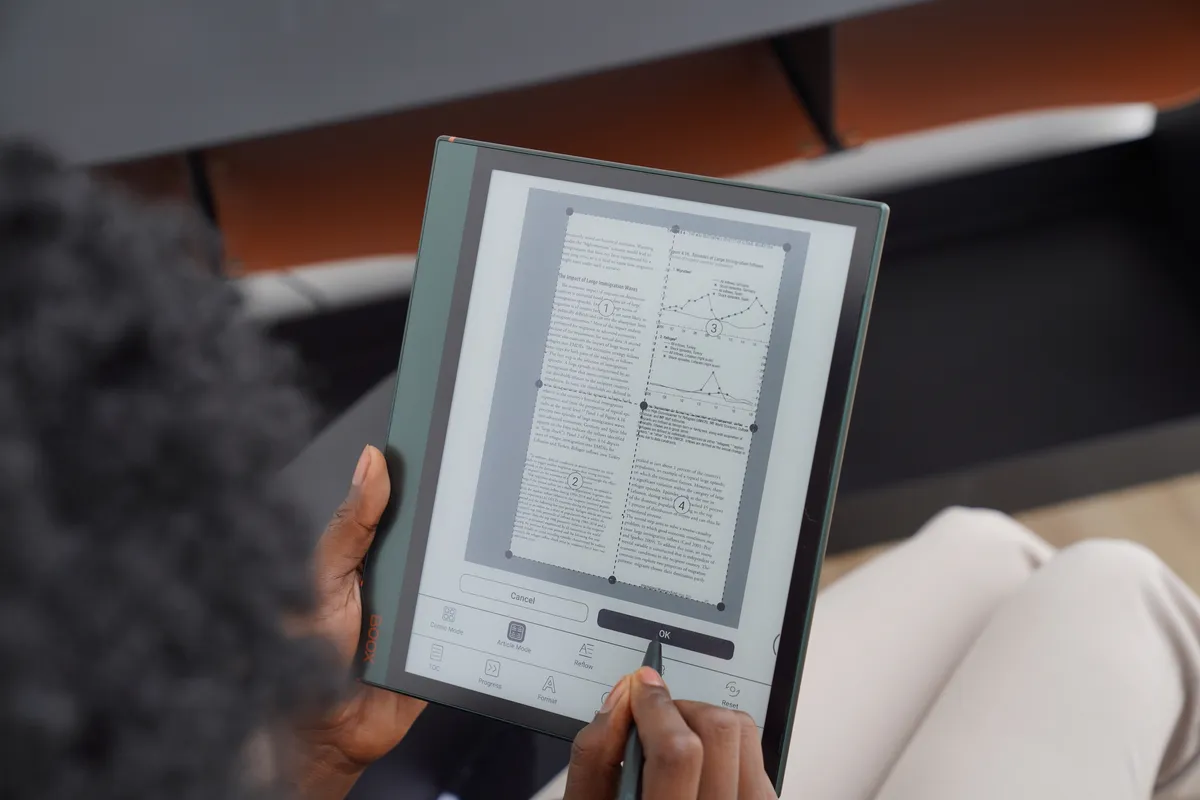
Don’t like your writing? No problem – the inbuilt AI Recognition software will convert your messy handwritten scrawl (in my case at least) to text. You can also highlight and underline as well as annotate, and all notes are listed in a separate page so you can collate and review your thoughts or key points later.
Hardware and battery: Premium-grade materials that feel great in your hands
The Note Air2 Plus is slim, just 5.8mm in width. Made from durable aluminium, it’s solid and cool to the touch, while the rounded edges and splash of orange add to the overall pleasing aesthetics.
Considering how slim it is, it weighs in at a relatively heavy 445g. This is largely down to the improved battery from the previous iteration, the Note Air2, so, as you might expect, it comes with excellent battery life. This weight, however, is evenly distributed across the device, so although heavier than some of the other e-readers on the market, it’s balanced in your hands.
With basic use (reading for around an hour every day), the battery lasted a whopping two weeks before needing a charge. With intense use (web browsing, drawing on the Notes app, marking up pdfs, streaming podcasts, and reading) it drained much faster, and I needed to recharge after three days.
There's a built-in, AI-powered Notes app
The Notes app comes preinstalled on the device and this is what turns this tablet into a true multitasker. Although there are other drawing and note-taking apps that you can download, the native Notes is by far the best for this device.
If you’re using the notepad to plan, journal, create mood boards, or just want to organise your thoughts, the included grids come in handy, and are a great place to start when faced with a blank page. There are your standard line guides of varying line heights, but there are also blank music staves, graph paper, monthly planners, to-do list templates, and comic strips.
But most of all, Notes is intuitive and pleasant to use. It’s satisfying. The more you dive into it, the more you realise it can do.
Each notepad can be expanded, so you don’t need to cram all your thoughts on one page, or worry about starting lots of different notepads. Leave your notes as handwriting, or, like when annotating documents, use AI recognition to convert your handwriting to text. If you have messy handwriting, it doesn’t always get all the words correct, but you can correct any errors.
In addition to the five standard offerings (fountain pen, brush, biro, pencil, marker), you can add another five custom brushes. But if you prefer typing, you can use the pop-up keyboard, or use with a Bluetooth keyboard. You can embed voice notes/ recordings, insert images, and website links, then once you’re done, you can keep your notes in the app, export them to PDF, or ping them over to your computer. You can even record the screen and save it as an MP4.
Verdict: Is the Onyx Boox Air Note 2 worth it?
Over the past month, this tablet has been put through its paces, so is it worth the price tag? There’s no denying this is a class bit of kit, even the packaging oozes luxe. But while it is a considered purchase, unlike other e-ink tablets, it is a true multitasker and a solid option for both note-taking and reading. This is largely thanks to the compatibility with Google Play Store and the wealth of apps you can install, so it will be interesting to see how new releases from other brands compare as we head into 2023.
If you’re only after a drawing tablet however – then you’d be better off getting one of the dedicated, full-colour, photoshop-compatible drawing tablets. Research students (or weary scientists) will get the most out of this tablet – the annotation system is one of the best out there, and sometimes a spot of Loop – an annoyingly addictive puzzle game – can be a welcome distraction.
SQUIRREL_13098438
Alternatives
Kindle Scribe
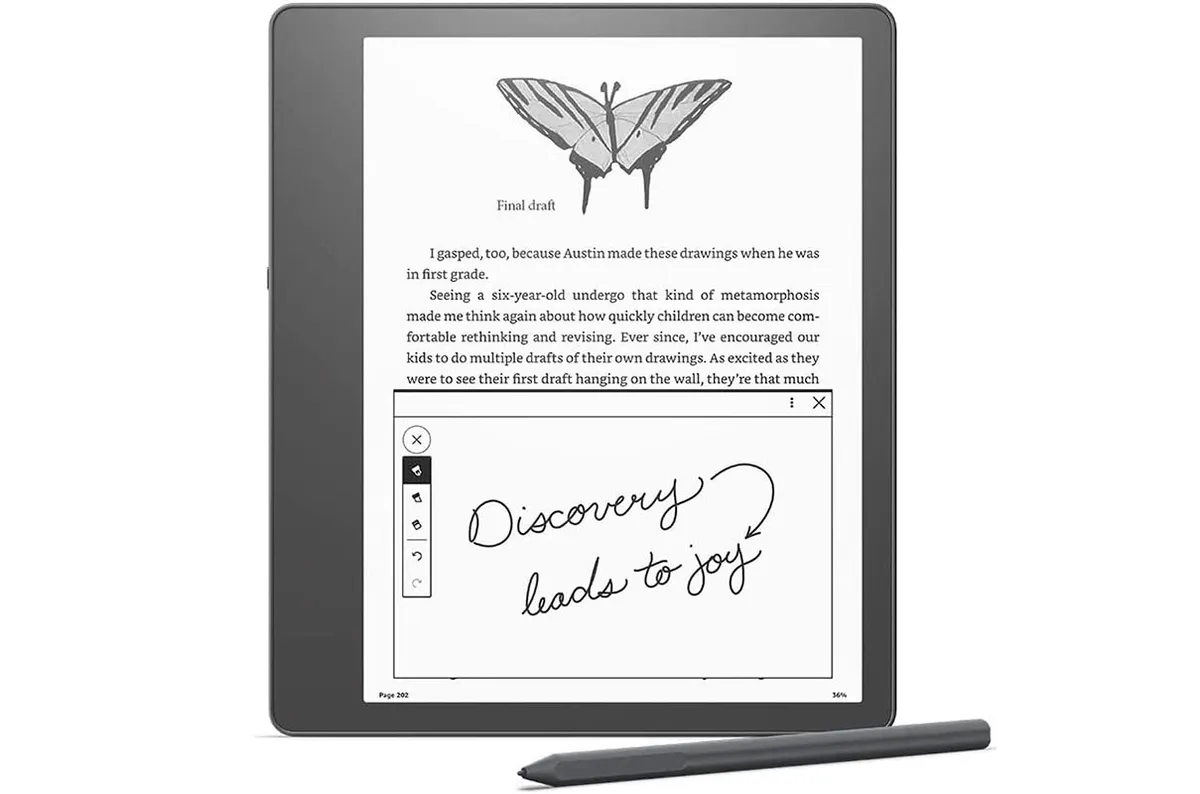
The Kindle Scribe is Amazon's latest offering in the Kindle family. It's available in three different sizes, 16 GB, 32 GB and 64 GB, and you've also got the option to include a basic pen or premium pen. Amazon has integrated sustainability into the design of this Kindle, and it's made from 48 per cent post-consumer plastic, and all of the aluminium used is 100 per cent recycled.
The Kindle Scribe is probably the most similar to the Air Note2 Plus in terms of function, and also comes with a decent battery life.
SQUIRREL_13061616
Kobo Sage
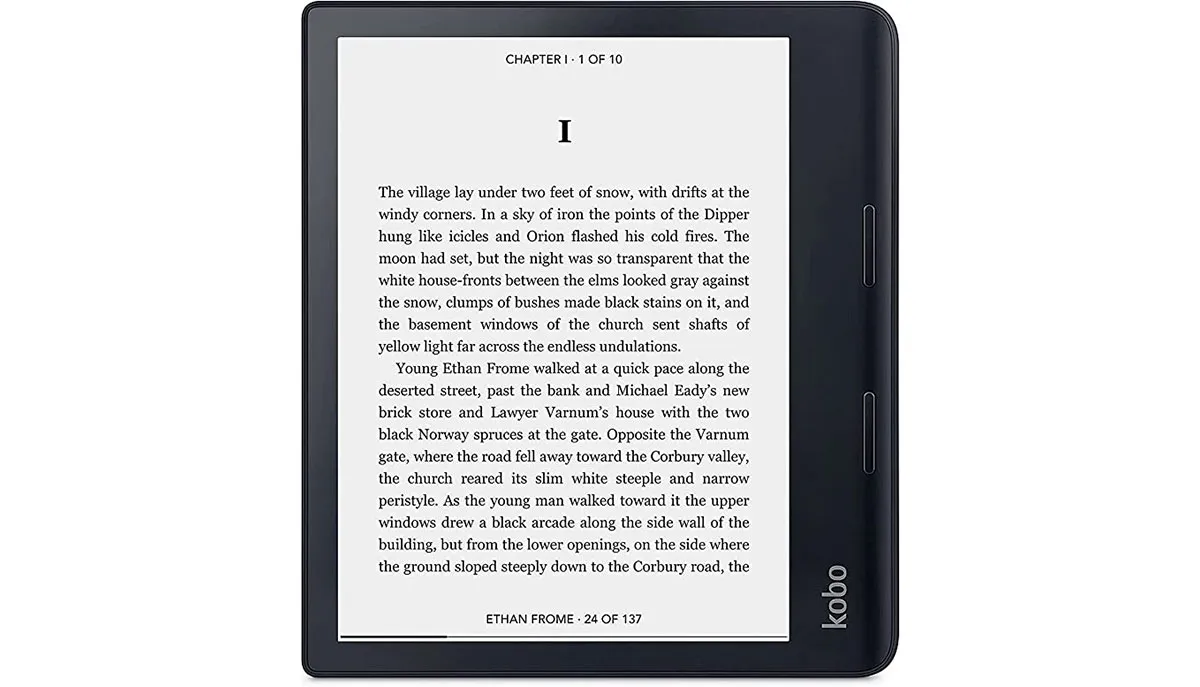
If you're looking for a more budget-friendly e-reader that you'll primarily use for reading and making annotations, then the Kobo Sage could be a good option. Its 8" screen is slightly smaller than the 10.3" on the Note Air2, but it also comes in at almost half the weight at just 240g.
It too has been designed with annotation in mind, and like the Air Note2 Plus, your handwritten notes can be converted to text. It's got physical page-turner buttons and it has the added bonus of being waterproof – so you can take it in the bath. Win!
Sadly, the stylus isn't included, so you'll need to shell out another £35 for that.
SQUIRREL_13065158
reMarkable 2
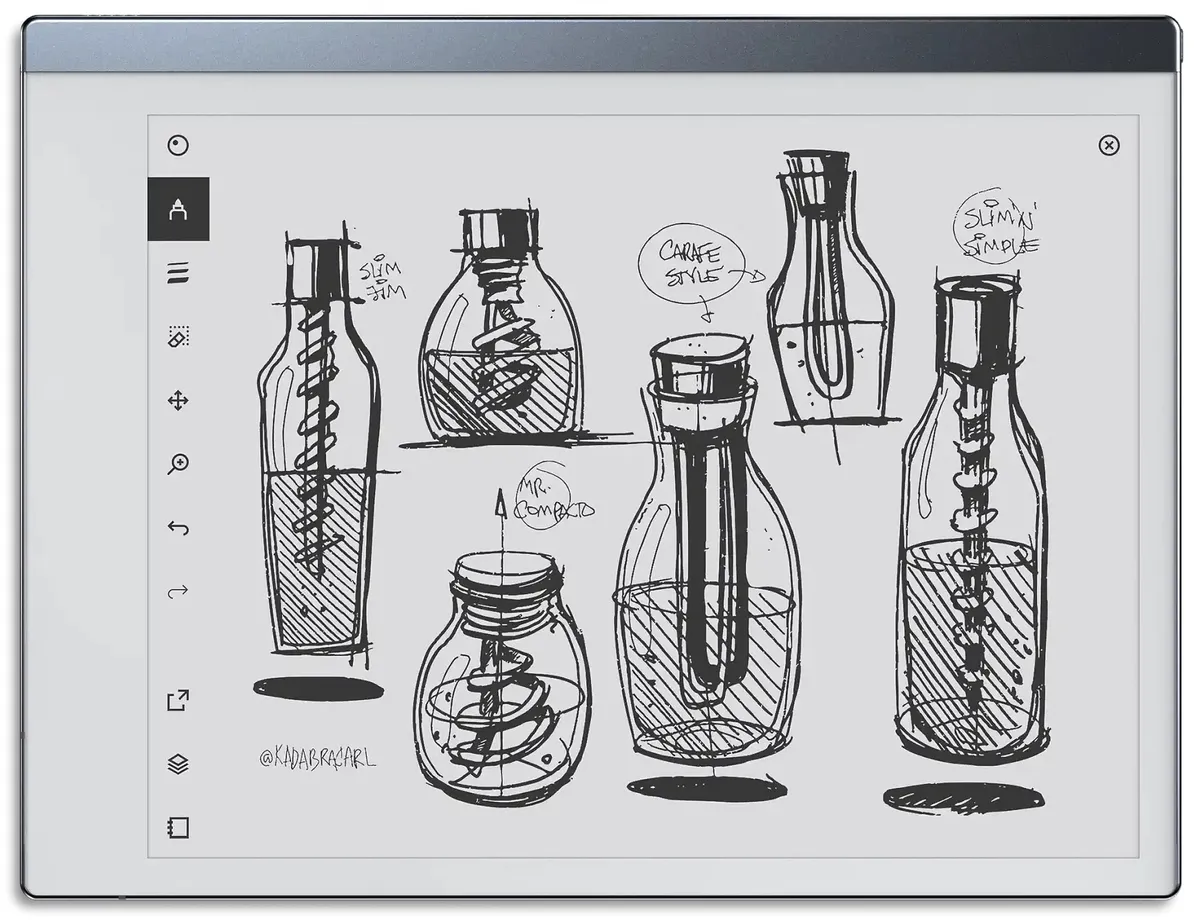
If you're wanting a tablet more geared towards note-taking, then the reMarkable 2 could be a good option for you. Of course, you can also read books or check PDFs, but as an e-ink device it does a great job at mimicking pen on paper, with the ultimate aim of helping you go paper-free. Unlike the Air Note2 Plus, it doesn't have a backlit screen, and like the Kobo Sage, you'll need to fork out extra for the stylus.
SQUIRREL_13075221
Read more: